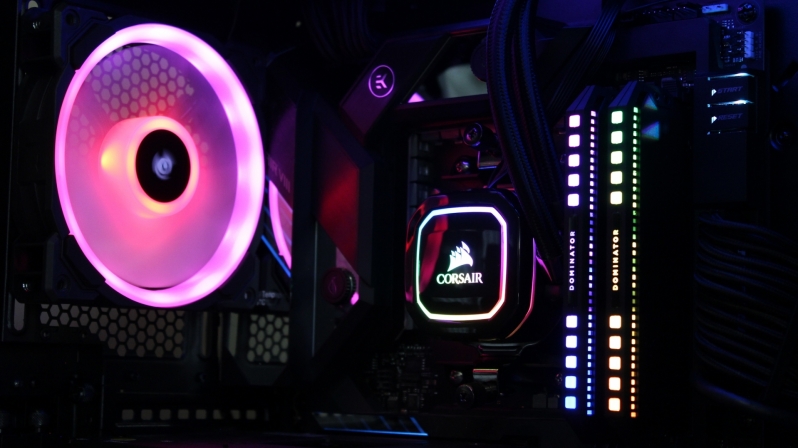Hi-Fi Rush PC Performance Review
Bethesda sets a beat for PC gamers with their latest game
Hi-Fi Rush is a game from Xbox/Bethesda that was revealed and launched during the first Xbox and Bethesda Developer_Direct. The game was released on Xbox Series X/S and PC, both as a standalone title and through Game Pass. PC gamers can buy the game on Steam, the Epic Games Store, and the Microsoft Store.Â
Hi-Fi Rush is an Unreal Engine 4 title from Tango Softworks, the developer behind The Evil Within and Ghostwire: Tokyo. This game is unlike anything else that the studio has worked on previously, arriving as a rhythm based action title that features both combat and platforming elements. In some ways, Hi-Fi Rush is similar to Devil May Cry, where the game rewards players who can complete combos and keep their attacks to the beat of the game’s music, and in other ways the game is like older Ratchet and Clank titles, with platforming elements, a cartoonish story, and humorous villains.
Today, we will be looking at how Hi-Fi Rush runs on PC, testing the game using various hardware configurations. Our testing includes older graphics cards like AMD’s RX 480, and newer GPUs like Nvidia’s RTX 3080 Ti, and gameplay resolutions that stretch from 1080p all the way to 8K.Â
Upscaling Options – DLSS, XeSS, FSR 1.0, and TSRÂ Â
On PC, Hi-Fi Rush supports upscaling technologies that include Nvidia DLSS 2.0, AMD FidelityFX Super Resolution 1.0, Intel XeSS, and Temporal Super Resolution (Unreal Engine Temporal Upscaling). This allows users of all graphics cards to upscale Hi-Fi Rush’s PC version to high resolutions, though some solutions do work better than others depending on your system’s GPU and your desired visual output.Â
In addition to DLSS, Nvidia GPU users can utilise Nvidia Reflex to help cut down input latencies, something that will help gamers to time their in-game actions to the beat of Hi-Fi Rush’s music. If you are an Nvidia GPU user, you should enable this option to improve your attack timings, it does make a difference. Â
Contents
Drivers and System SpecificationsÂ
For today’s testing, we have used AMD’s Radeon Software 22.11.2 driver and Nvidia’s 528.24 WHQL drivers. These are the newest drivers that were available at the time of our testing. During testing, we played the PC Game Pass version of Hi-Fi Rush.
Before testing, we fully updated our Windows 10 installation and ensured that no unnecessary background applications were running on our test system.Â
Full System Specifications
Below are the full specifications of our game testing system, which we built in mid-2020 to meet the needs of future games. Alongside this system, we will be testing various old and new graphics cards from AMD and Nvidia, including Nvidia’s RTX series and AMD’s RX 6000 series.
To help support the website, we have included Amazon affiliate links below should you wish to purchase the same or similar PC parts. You can read more about our games testing system here.
OC3D Game/GPU Test Rig (Affiliate Links Below)
AMD Ryzen 9 3950X Processor with Prescision Boost Overdrive
ASUS ROG Crosshair VIII Formula (X570) MotherboardÂ
Corsair Dominator Platinum RGB Series DDR4 3600MHz (2x8GB) Memory
Corsair RM1000i Power Supply
Corsair iCUE H150i RGB Pro XT All-in-One Liquid CPU Cooler
Corsair MP600 2TB PCIe 4.0 SSD
Corsiar Obsidian 500D RGB SE Case
Windows 10 x64





